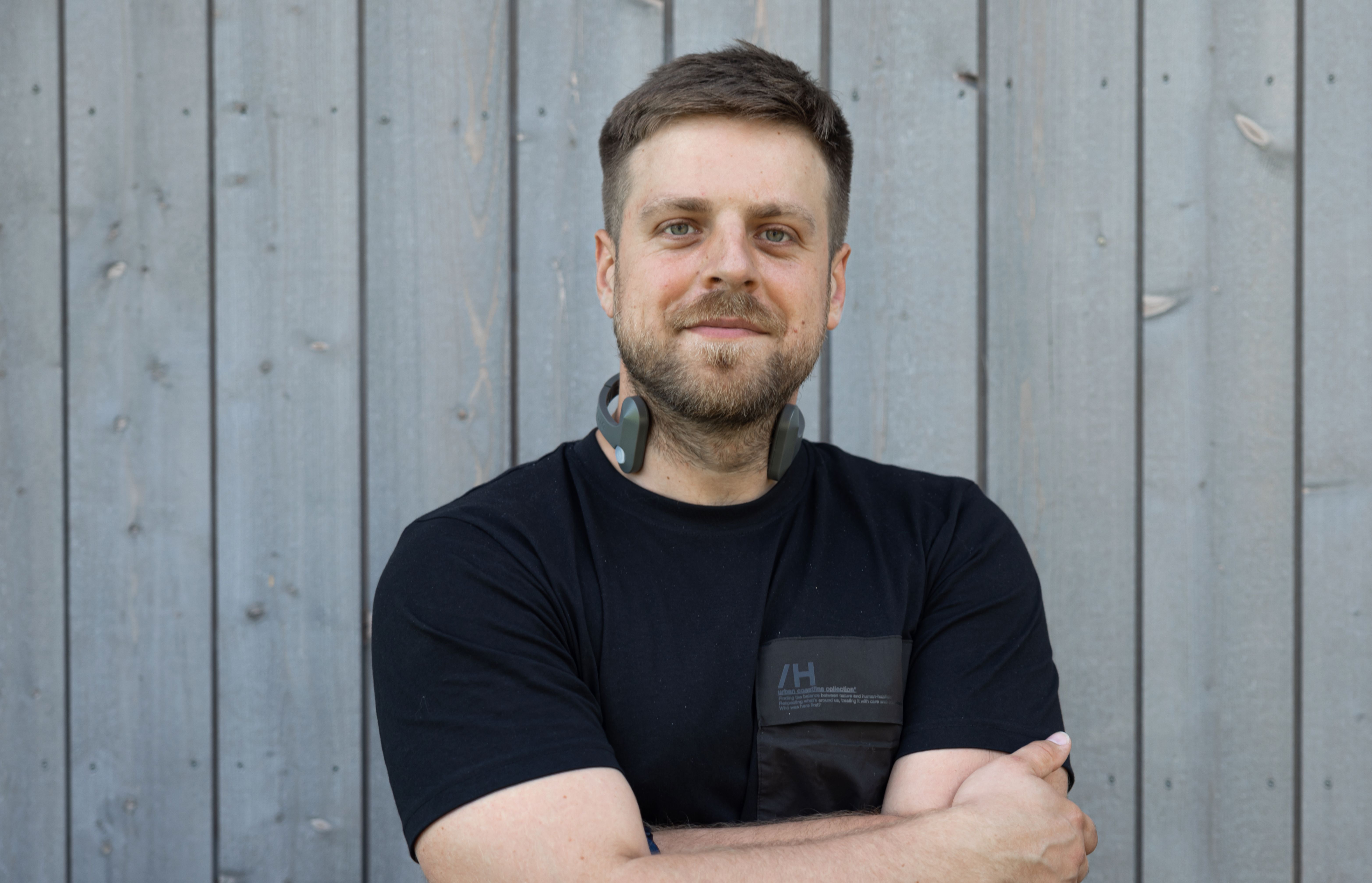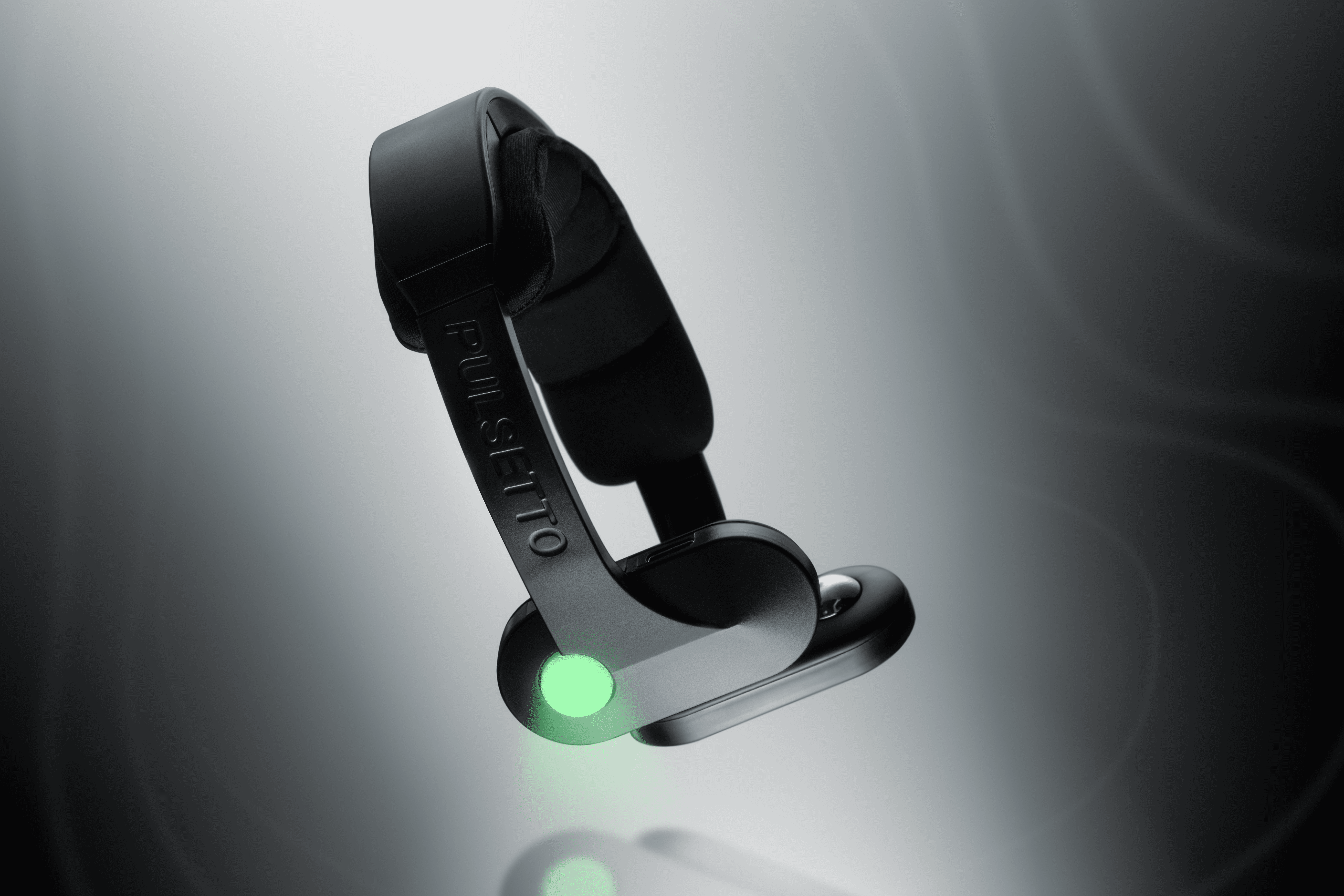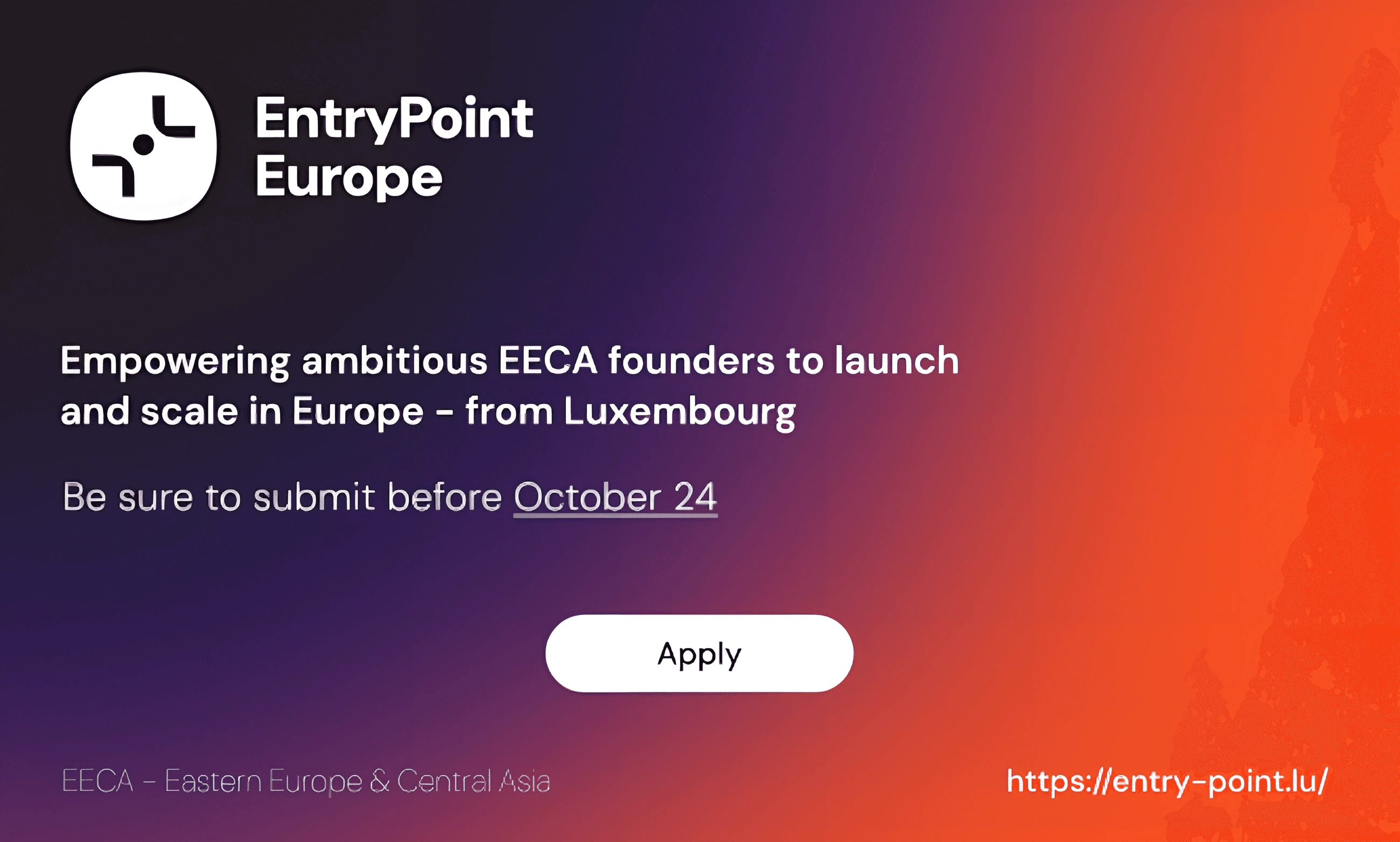Pulsetto is a Lithuanian healthtech startup that makes vagus nerve stimulation (VNS) accessible to a broad audience. In just two years, the company has evolved from a home-built prototype into one of the fastest-growing wellness devices worldwide. It has launched in-person sales in Times Square and London and reached 1 million app sessions per month this summer. Now Pulsetto is expanding beyond wellness into defence applications, giving US veterans and first responders a tool to steady themselves under pressure and recover afterward, addressing a critical blind spot in recovery that has long been overlooked.
In an interview with Vestbee, Povilas Sabaliauskas, co-founder and CEO of Pulsetto, revealed how personal challenges sparked the idea for the startup and shared his vision for neurotechnology — now moving beyond wellbeing to make its mark in defence.

What inspired you and Vitalijus to create Pulsetto, and how did your backgrounds influence the development of the device?
Pulsetto was born from both a professional challenge and a personal turning point. Before Pulsetto, I worked in neuromodulation, developing stimulation protocols, training doctors, and witnessing how non-invasive techniques could support brain recovery. That exposure drew me deeper into science.
The mission shifted when my father fell seriously ill. Searching for options, I came across vagus nerve stimulation, but access was limited to costly, invasive medical devices. Out of necessity, I built the first non-invasive prototype at home. Around the same time, Vitalijus Majorovas faced a similar issue as his wife was experiencing chronic migraines.
That’s when it hit us – the science was there, but people couldn’t reach it.
That first prototype became the foundation of Pulsetto. Vitalijus brought his experience in building and scaling healthtech companies, and I contributed to the neuromodulation background. Together, we set out to make stress recovery and the wider benefits of VNS available to anyone who needs it. From idea to first sale, it took us just nine months.
Developing Pulsetto in just nine months is impressive. What challenges did you face?
We launched on the Indiegogo platform and were surprised to get the necessary funds within 24 hours. The campaign closed at $150,000, and that early traction set the pace for everything that followed. By 2025, it made $10 million in gross revenue, three times higher than the previous year, enough to rank Pulsetto among the fastest-growing wellness devices worldwide.
The real challenge was speed without compromise. The device had to be safe, effective, and comfortable, even as we were prototyping and testing nonstop. It felt like running a marathon at sprint pace.

Pulsetto FIT is an upgraded version of your VNS device. What makes it stand out?
Pulsetto FIT was developed directly out of the feedback our users provided. Some said it worked well but felt too firm, others that the size didn’t fit them comfortably. We went back, added softer magnetic padding in two sizes, made the stimulation smoother, extended the battery life, and gave users more control through the app.
Most devices stimulate one side of the neck, but Pulsetto works bilaterally, which studies suggest can be more effective. At first, it feels like a form of stress relief. Over the course of weeks of use, people start to notice something deeper — their resilience improves.
The app offers guided sessions and integrates with wearables such as Oura and Apple Health. We wanted to simplify the process so that people could use the device easily every day.
How does vagus nerve stimulation help people manage stress and develop mental resilience?
Think of the vagus nerve as the body’s reset button – you push it, and everything starts to slow down. When the nerve is stimulated, the parasympathetic system takes over. Then, the heart rate slows down and cortisol levels drop. This way, the body starts to move out of the “fight-or-flight” response.
Some people notice the change right away as the tension eases and their breathing slows. Others experience most benefits at night, when the stimulation quiets racing thoughts, and people fall asleep more easily. Over time, repeated use can strengthen that recovery response, and the body can be more resilient when stress builds up again.
What did your recent clinical trial show?
The trial gave us more than encouraging results. Bilateral stimulation lowered cortisol, and we saw clear drops in depression and anxiety scores – 56% and 45% reductions. Sleep quality improved by 41%.
But behind every statistic is someone’s life. A nurse told us she finally slept after long night shifts. An athlete described it as his “post-game switch.” A soldier said it was the first time in months he could calm down before heading back into action. Those are the changes that stay with you more than the graphs.
You aim to support 100 million people worldwide. How will you grow Pulsetto to get there?
Our aim is simple: make Pulsetto as accessible as possible. That means direct sales, retail partnerships, and working with wellness, healthcare, and even corporate programs. New regions are opening up as we secure the right distribution partners. But growth on its own doesn’t matter much. What we really want is for people to treat stress recovery the same way they treat fitness. That takes more than a device – we will have to educate, build a sense of community, and trust, which can only be gained with time.
Pulsetto is expanding from wellness into defence applications. How can your device assist soldiers and first responders in managing extreme stress?
We’ve already seen it in action. In the US, we’re working with Grey Team, a nonprofit that helps veterans living with stress, sleepless nights, and trauma that doesn’t go away when the mission ends. Pulsetto gives them a tool they can use every day, enabling them to regulate their system and slowly rebuild resilience.
At the same time, we’re developing a defence-focused version with ScaleWolf. The aim is clear: give soldiers and first responders a tool to steady themselves in the midst of pressure and to recover when it’s over.
We’ve invested billions into weapons and armor, but almost nothing into recovery. That’s the part we can’t ignore anymore. That’s where the real blind spot is and why tools that calm the nervous system may prove just as vital as body armor.
What are some real-world stories or feedback from users — both in wellness and defence sectors — that have inspired your team?
Big-name NBA players like Domantas Sabonis and Matas Buzelis, biohackers like Brian Johnson, and best-selling authors like Peter Diamandis, Ben Greenfield, and Max Lugavere often grab headlines. However, the real impact comes from the thousands of people who make Pulsetto part of their day. They're proof that stress recovery doesn’t have to be out of reach.
In July, our users passed 1 million app sessions in a single month. Each one of those moments is someone deciding to give their nervous system a break.
One story that stuck with me came from a first responder. After a particularly rough shift, he used Pulsetto, and for the first time in weeks, he slept through the night. That’s the point. In every setting: sport, work, or combat, people need a way to come down from the stress that doesn’t let go.
How do you see wearable neurotechnology evolving in the mental wellness space and beyond in the near future?
In a few years, nervous system training could be as routine as checking your steps. That’s the direction we’re moving, making it simple enough to become an everyday habit.
Healthcare systems are shifting, too. In June 2025, the US launched a national campaign calling for every American to wear a health device within four years. Soon after, the White House and CMS brought together more than 60 health and tech leaders – from Apple and Google to the Cleveland Clinic – to build connected systems and give people control of their own data.
That tells me this isn’t a passing trend. It’s a push to make real-time health monitoring part of daily life. Neurotechnology fits directly into that. A vagus nerve stimulator could become as routine as brushing your teeth, a small step to keep your nervous system steady. The challenge is making it simple enough that people stick with it.
Looking ahead, which innovations or developments in Pulsetto’s roadmap are you most excited about over the next few years?
We see three big steps ahead:
- First, AI-driven personalisation — letting Pulsetto learn from your own biometrics and daily rhythms, so the device adjusts in real time without you needing to think about it.
- Second, a medical-grade version designed for clinical use. That means rigorous trials, regulatory approvals, and targeting conditions like PTSD, anxiety, and sleep disorders where the need is greatest.
- And third, a military-ready model, built for extremes. Something soldiers and first responders can depend on in the field, even under heavy stress.
The bigger vision? To make nervous system training as natural as checking your phone — a small, personal habit you can rely on every day to stay steady and resilient.







